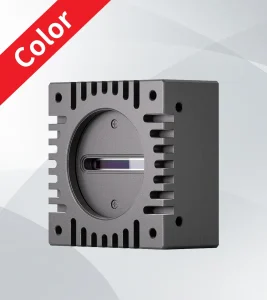When it comes to picking the perfect GigE industrial camera for your use case, there are a number of factors in play and considerations that you need to make according to your application-specific needs. GigE cameras are popular in fields like manufacturing, automation and quality control because of their high-speed data transfer capabilities over large cable lengths — up to 100m using standard Ethernet cables. Understanding these technology related stuff will help you in making a better decision.
The resolution is up first. Any application that needs high [image] detail such as inspection or precision measurements can benefit from a 5 to 12 megapixel camera. However, the 2 to 4-megapixel cameras may perform better compared with high-resolution sensors in applications such as real-time monitoring where data processing must be faster due to higher frame rates. A more concrete example: consider a 120 fps camera at 2 megapixels vs. one offering higher resolution but running at slower frame rates, the former will naturally deliver smoother live viewing.
Then, analyze the frame rate. Cameras capable of 100 or more fps are useful in capturing fast-moving objects, for example in robotics and automated inspection systems. Cameras that can run at 30 fps may also be more appropriate for use cases where running out of high frame rates is less critical- e.g. security monitoring, or static inspections.
The sensor type is another important aspect. The high-speed capability, low power consumption and advanced imaging features demonstrated by the Giant benefit GigE industrial cameras in general where CMOS sensors prevail. The CMOS sensors has the ideal capabilities of high resolution and fast frame rates that are demanded by applications like machine vision or automated inspection systems.
For power usage, many Part 1300 GigE industrial cameras provide Power over Ethernet (PoE) that transmits data and power through a single Ethernet cable. Less cabling for simplified setup This makes PoE a very powerful tool, especially in areas where access is difficult to reach and minimizing the number of cables can result in more convenient / cost-effective system designs.

Furthermore, the applications which were run over it needs real time data processing to be more stringent in terms of latency and bandwidth. GigE color cameras operate with bandwidths of 1 Gbps and should be adequate for most high-speed image capture needs. However, if the application involves quick transmission of large amounts of data (for example high resolution images in medical imaging or scientific research), you may want to look at GigE Vision cameras that are designed for fast and low-latency transmission.
Cost is another factor. The cost varies for GigE came w, depending on the resolution and frame rate or other additional features. Professional cameras with enhanced settings can go for over $1,500, yet beginning level models are sold under $500. Balancing this tradeoff with the dollar amount your willing to spend is what will determine your choice of software.
According to a 2022 market report from Technavio, there is considerable demand for industrial cameras in the automation sector due to recent developments of quality inspection systems using artificial intelligence. This will also result in an annual growth of 10.5% as the market scale is expanding with rising demands for advanced imaging technologies across all industries mentioned in the report.
Automation expert John Smith explained, “Selecting a camera is not only about resolution or speed but also considering the whole system’s requirements. Achieving the best performance requires a combination of power, bandwidth and sensor type.
In the end, finding to correct GigE industrial camera depends on a lot of analysis for your application. If you would like to know more about the latest options, check these gige industrial cameras out.